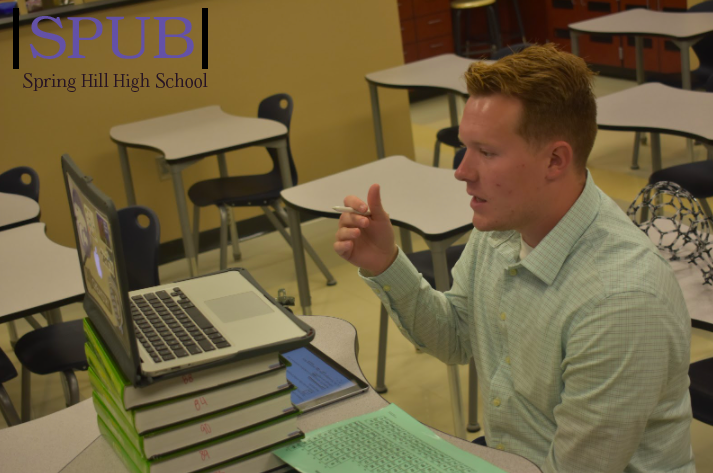Block Schedule, Planning Period Problems
Each year, the teachers and administrators discuss what should go in their contracts for the upcoming school year. This year, things were a little different due to COVID-19. The pandemic caused the school to go remote, which meant that some things in the contract had to be changed. One of those things was the teacher’s plan periods.
“The teachers get with the school board and the members of administration at the district level, and basically every year they discuss things like salary and insurance, but they also discuss the terms of their working conditions. One thing that has been negotiated and agreed upon is that every teacher needs to have one block of time during the day where they can plan for lessons, where they can grade, where they can do things. So, that agreement was put into our contract,” Georann Whitman, SHEA president, said.
Teachers have to get a plan period every day as written in their contract. While the school was in remote learning, they operated under a block schedule. This made it impossible for every teacher to get a plan period daily. The district had to find a different way to still give them their required time.
“I need to give my teachers 40 minutes or whatever designated time each day for plan and stuff like that. What we did for the block schedule was that they would have it every other day, but for 95 minutes so we were able to average out the time that we were supposed to give them per day,” Marc Williams, principal, said.
Many teachers didn’t have a plan period every day while remote. They signed a waiver saying that this was okay during remote learning.
“I didn’t get a plan every day. There were a lot of us that didn’t. We wanted to do what was best for the students. If that meant giving up a plan period, then okay,” Whitman said.
The suggestion of keeping block scheduling after returning to in-person has been made. However, the waiver the teachers signed pertaining to their plan periods during remote did not relate back to in-person learning.
“We had to make sure of two things: the special education kids were getting their so many instructional minutes, and we also had to make sure that enough time was given so that kids didn’t necessarily have to spend eight solid hours looking at a screen. It was also what’s best for the students. Is it best for the students to lecture this amount of time and then give them 20 or 30 minutes over here to work on their assignments or whatever. So, when we signed that waiver, it was just for that time and just for those reasons. It’s like ‘when things get back to normal’ all bets are off and we go back to normal,” Whitman said.
Remote learning and block scheduling caused many changes to be made with how the school year was going to be made. It affects heavily on the students, teachers, and administration. With all the changes being made and the events happening, the school is stepping closer to getting back to the normal of now while making sure everyone is cared for and all requirements are met.

Hey! My name is Lily Haney and I’m going to be a senior this year. It will be my third year in SPUB. I am the Online editor in chief of our Stampede...

